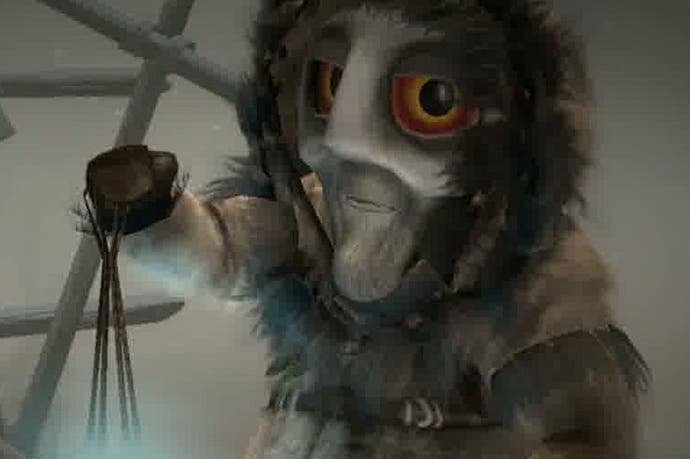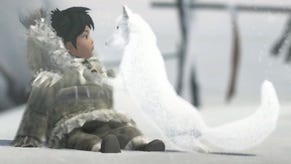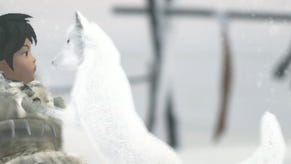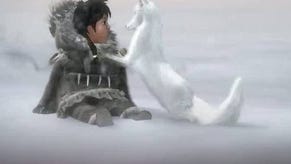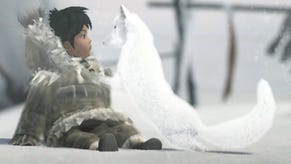Never Alone and the quest for an I?upiat video game
A platformer from the top of the world.
Adopting the long view - and in truth, what other view is there? - it took the Iñupiat people about a century to reach the conclusion that what they really needed was a video game. That's nothing, though, when you're dealing with these kinds of timescales. The game itself has taken millennia to come together.
"I think that if you look back at the last several generations of Alaska Natives there has been a tremendous amount of change." This is Amy Fredeen, CFO and executive vice president of the Cook Inlet Tribal Council, a not-for-profit group serving the Iñupiat and other Alaska Natives who live in and around the Anchorage bowl area. "My grandmother had a purely subsistence lifestyle when she was born, but over time she had to shift to one where ownership of land was tied to how you used the land. When we had Western contact, I think it really shifted the value system of the Alaska Native people." A pause. "I'm not saying we lost our values, but we are still struggling to find how we sustain our values in a time where we've changed so much and so quickly."
As a result, Alaska Native youth are dealing with trauma that extends across multiple generations. "You know, the parents who suffered at boarding schools and weren't allowed to speak their language and if they did, they were punished," says Fredeen. "There were some very terrible things in boarding schools happening. You have all these negative things that came from things that happened a few generations ago. Those adults were raised to be ashamed of their culture, and now the kids have turned to do all these things that maybe aren't positive. Despair, drugs and alcohol. These types of challenge are what many indigenous cultures face when they face rapid transitions."
You know this story, or a variation on it. Change creates trauma, trauma causes lasting damage, and at the end of it - in this case at least - lurks a single word: supernative.
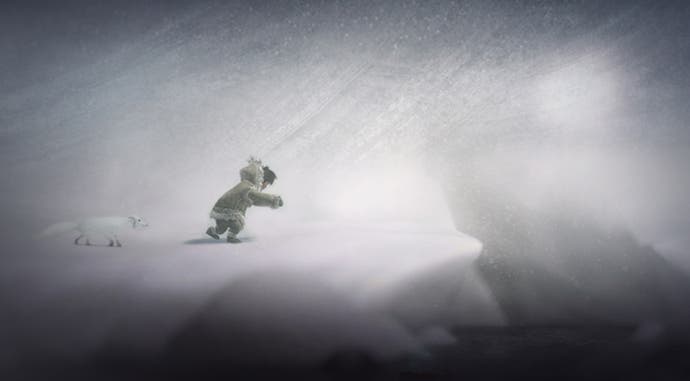
Supernative is a strange kind of word, and it's not, on balance, a very pleasant one. It's a term game designer Sean Vesce first heard when the CITC invited him to start spending time with the Iñupiat people, who have a millennia-spanning history of surviving in some of the harshest environments our planet can offer.
And supernative is bound up in that history - or rather, it's a tacit rejection of it. "Within the culture, particularly within the youth, we picked up that there's a struggle to identify with their traditional values," explains Vesce, the creative director at Upper One Games, the developer that the CITC eventually formed with E-Line Media, an educational publisher. "In some cases they reject them because they're not western, and that rejection can include people who embody those values. And so we heard this term, we heard 'supernative.' 'That person is supernative.' And that's a derogatory term."
In a way, it was the whole supernative problem that brought Vesce to Alaska. "There are about 11,000 individuals who come through our doors each year, seeking a way to connect to their potential," Fredeen tells me when I ask about the CITC, which provides a wide range of social, education and employment services. "In the Anchorage area, less than half the Alaska Native students are graduating from high school. They're far more likely to have low incomes, and they're twice as likely to commit suicide. They have all these bad things they are facing, For a lot of them, I think they just don't see the potential out there."
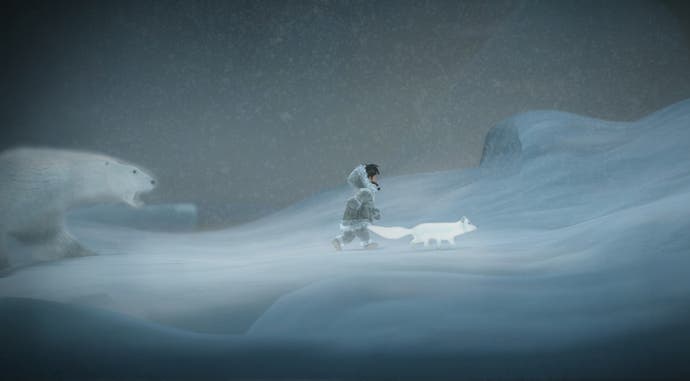
The CITC wanted a way to inspire the kids they worked with - a way to show them they already had something to be proud of. "It's so they aren't faced with all these negative statistics," says Fredeen. "It's so that they see something that they are part of that's positive and that the whole world thinks is cool. Around the lunch table one day, our CEO Gloria O'Neill said, 'Why not a video game?' She charged us with finding the best people, and that connected us with Sean."
"That conversation was transformational for me as a game developer," says Vesce, an industry veteran with over 20 years' experience working for Microsoft, Activision and Eidos. "Gloria had really done her homework. She had really been thinking about getting video games as a medium to do things beyond just entertain. She was asking really deep questions. Could games be used as a means to share and celebrate and extend world culture? Could games be used to not only inspire the youth within her communities but also to inspire youth on a global level to take an interest in thinking outside the box and thinking about other world cultures and becoming interested in other world views?"
Pretty quickly, Upper One Games was formed in Seattle: a studio made up of designers and coders from the likes of id and Sony, as well as newcomers from Digipen and other academies. Crucially, however, Vesce and his team would also be working closely with the Iñupiat community to create a game that reflected their culture in a way that was meaningful and accurate. It's not the complete solution, which would presumably involve people from the Iñupiat making the game themselves, but it's a vital step in the right direction. Upper One calls it inclusive development.
"You know that game design is a hard thing already," laughs Vesce. "This aspect of the project added another dimension entirely. We kind of joke and call ourselves accidental ethnographers. We went in first and foremost with what I think was the right attitude, Having talked to a few film-makers and authors who had done this sort of work before, one of the great pieces of advice we got was, you need to go in listening and viewing yourselves as students and hanging your egos at the door. Because you're coming into a culture that doesn't really care about your lineage or your career. You're there to learn. We went in from day one with that attitude. And spent many many hours with folks from the community - elders, storytellers, artists, youth - really asking questions, trying to understand their perspectives, their history, their values. I think that was so important because that gave everyone on our team a really amazing perspective on it." Vesce pauses. "It's not like games in the past where we're working with licensed IP. This is a real culture, real people, a living culture, people that are moving forward."
Inclusive development went far beyond research. "We realised early on that it wasn't going to be something where we could make a game and then toss it over the fence and hope for an approval," Vesce explains. "This was something where we would need to partner with members of the community throughout the development. And so we put together a team lead by Amy, a varied group of folks from different areas and with different skillsets and we took it upon ourselves to be teachers of game development and to work with them in lockstep on every aspect of creative development.
"So in the early stages of the game design, in the writing we worked with a fellow named Ishmael Hope who's an Alaska Native storyteller. In a lot of the interactions and the mechanics we worked with Ron Brower Sr, who is really kind of an Iñupiat historian from the culture and really understood things. So that depth of partnership really made the difference."
I ask Fredeen why she thinks Western art has often been so spectacularly bad at depicting people who lie outside of a very limited range of backgrounds. At worst, you get ignorant all-out racism, but a lot of the time you increasingly get something more insidious: ignorant well-meaning racism, where cultures are air brushed and rendered a little too cleanly.
"I think the thing that's made a complete difference in this game is that Sean and his team have become a part of the Iñupiat community and part of our extended family," Fredeen replies. "This isn't something where as the Iñupiat and as the cultural ambassador, I sat down at a table once a quarter and said yes, no, yes, no. This was an ongoing conversation where I connected Sean and his team to the people and the community and they listened. I think that's where people trip over themselves is that they think if maybe they read a book or two and go someplace once then maybe they'll understand the people. But really, you have to have close ties and develop a deep relationship with those people."
All of this fed into Never Alone, or Kisima Ingitchuna, the debut title from Upper One - a beautiful side-scrolling platforming game about an Iñupiat child and an arctic fox. Never Alone has co-op challenges, physics puzzles, polar bears, spirits, and some of the prettiest icebergs you'll ever see in a game, but a lot of its appeal lurks far deeper, beneath the chill of the wind, beneath the fur-lined collars. For players outside of the Alaska Native community, this feels like a wonderful glimpse of another way of life - accessible yet authentic.
"We've tried to infuse the Iñupiat worldview, the values, the history into all the creative decisions," says Vesce. "One of the coolest things I think is that we were so inspired by the Iñupiat storytelling tradition that we decided very early on that we'd try to replicate what we experienced through hearing elders tell stories. And to do that in their language, and to try to do it in the same kind of cadence and pacing, to try and approximate the same kind of complexity and nuance that exists in those stories." Vesce ponders this for a second or two. "It's not like a western story where everything's neatly tied up in a bow and many things are obvious. Iñupiat stories tend to be very complicated and very nuanced. And, as Amy likes to say, some of these stories you're told as a kid, you may not understand fully until many years later where you're suddenly in a situation where you realise the meaning of that story. That's the kind of thing we wanted to imbue."
In terms of mechanics, the primary theme of Never Alone is interdependence. "This is something that is a core value of this group of people," Vesce nods, "specifically because of the harshness of that environment, and because they're so dispersed within that environment. The need to stay connected, to work together was critical to survival. We thought that was a fantastic touchstone to use within the gameplay. So that's one of the reasons why we chose the two characters - the girl and the fox. These are two unlikely characters that each have a different set of skills and abilities, but that have to work together to overcome obstacles."
The final part of the mixture is the mixture itself - the intergenerational exchange that kicked off the whole project. "It's the idea of passing information from the elder generation to the youth," says Vesce. "This game is kind of a gift in that way. A lot of the material we've learned about and imbued in the game is from the elder community/ What's been wonderful is that their attitude to technology has been really progressive. They've said, 'We totally support this because we know our kids are playing these kinds of games and that they're comfortable with those, and so your ability to adapt these stories to this game form are completely natural.' That's been a real joy."
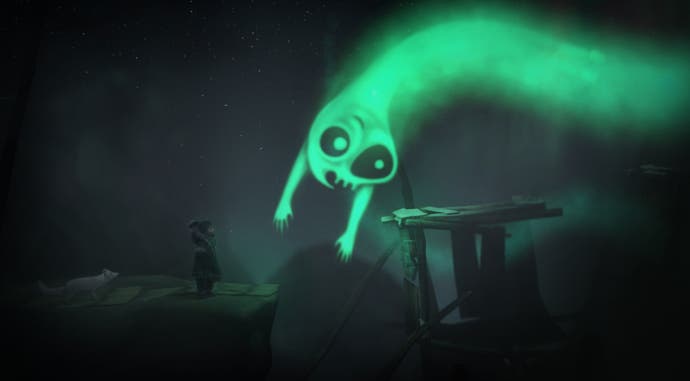
Is there something about games that takes players through the empathy barrier a little more? Something that makes them a more powerful window onto a world than a book or a movie? "Oh, definitely," laughs Vesce. "And we see it every day, both in the playtests we do here locally but also in about the dozen or more trips we've made to Anchorage. One of the most amazing experiences of the project has been to sit with kids from the community and watch them play. They're very familiar with Xbox and Playstation games and action games and sports games. They pick up the controller right away, engage with the gameplay, have fun, get excited, and then realise that there's more there this time. We're dealing with subjects, we're tackling elements of their mythology, certain characters and settings that have a really deep meaning. These things have been passed down for generations through the verbal traditions that have gone on for thousands of years there."
These are also some of the things that have frequently been rejected by younger members of the community, of course. "But when presented with elements of their tradition and with elements of their heritage that they know, when it's done in a way that is not normal?" asks Vesce. "This is medium that the kids are very familiar with and that they actually feel is their medium. So suddenly you have people talking, kids asking questions, kids sharing stories. And especially for us as game developers, you have kids becoming interested in the process of game development. Even beyond their own traditions, they were becoming engaged in possible careers in game development and media in general, It was working on so many different levels that we were really floored." He genuinely seems a little giddy at this. Maybe a sequel or follow-up to Never Alone wouldn't require a development team in Seattle.
I ask Fredeen if there was a particular moment when the whole project came into focus for her. After so many years, what was it like to see her own culture represented in this way?
"You know, I have to say when we first started this process, I was a little nervous," she says at last. "Seeing ourselves portrayed in a game, I was a little worried that I'd be bearing the whole burden of representing the Iñupiat people on my own shoulders, which I didn't think was appropriate. But there was this meeting which I think was a teleconference with Sean and his team. They showed us some of the concept art and they talked about the overarching plan for the game. It was at this point that I realised that, even without playing the game, this is a new way of storytelling for our people. Storytelling has been this really critical tool for Alaska Natives to pass on wisdom to the next generation, because before Western contact we didn't have written language, it was all an oral tradition. We had storytelling and this artform called scrimshaw, the art of drawing stories on baleen or ivory. That was another way we told stories and literally Sean and his team brought that to life on screen and it was completely moving. These are our stories, delivered in a new way. I knew we were on the right track."
